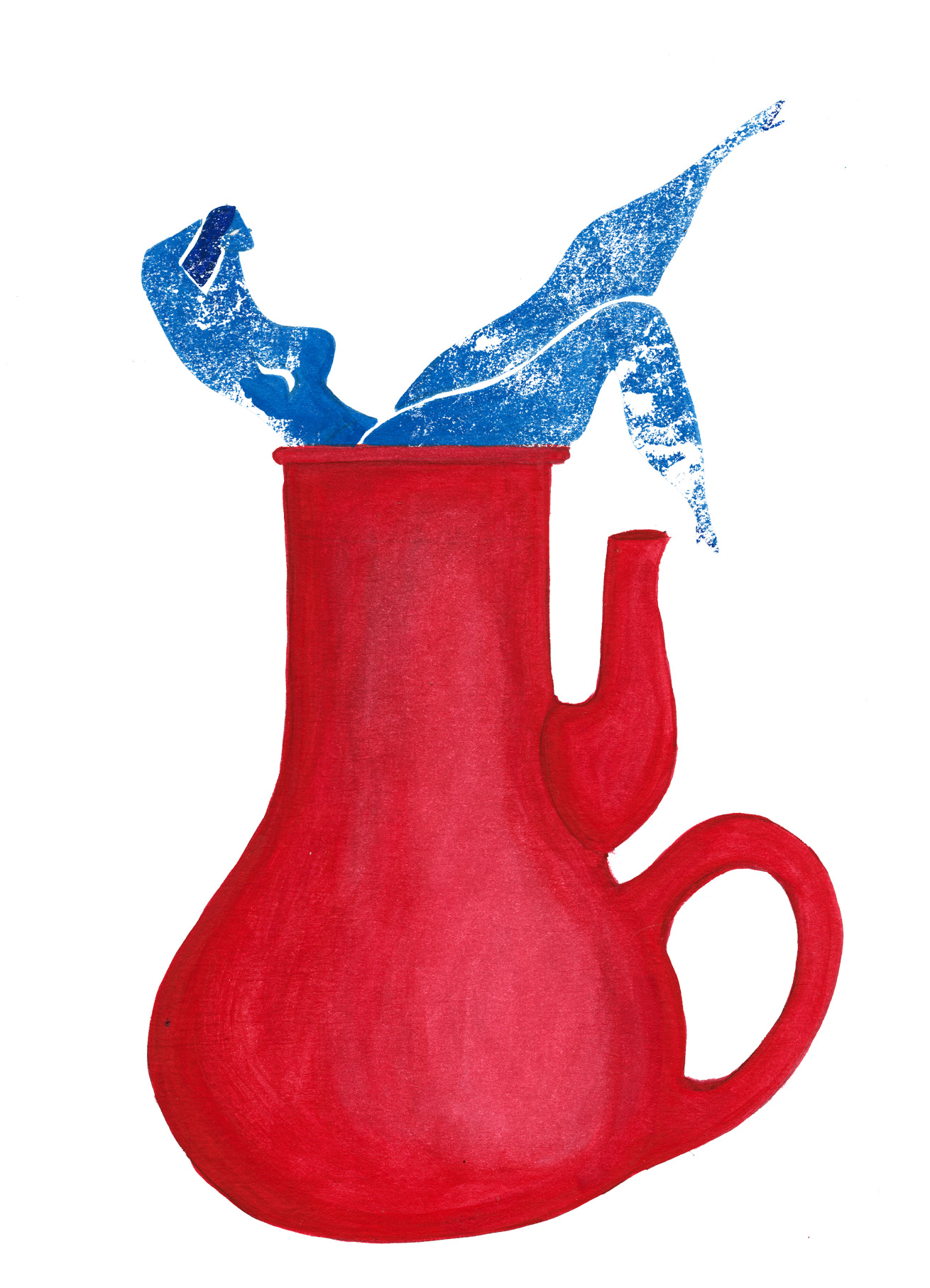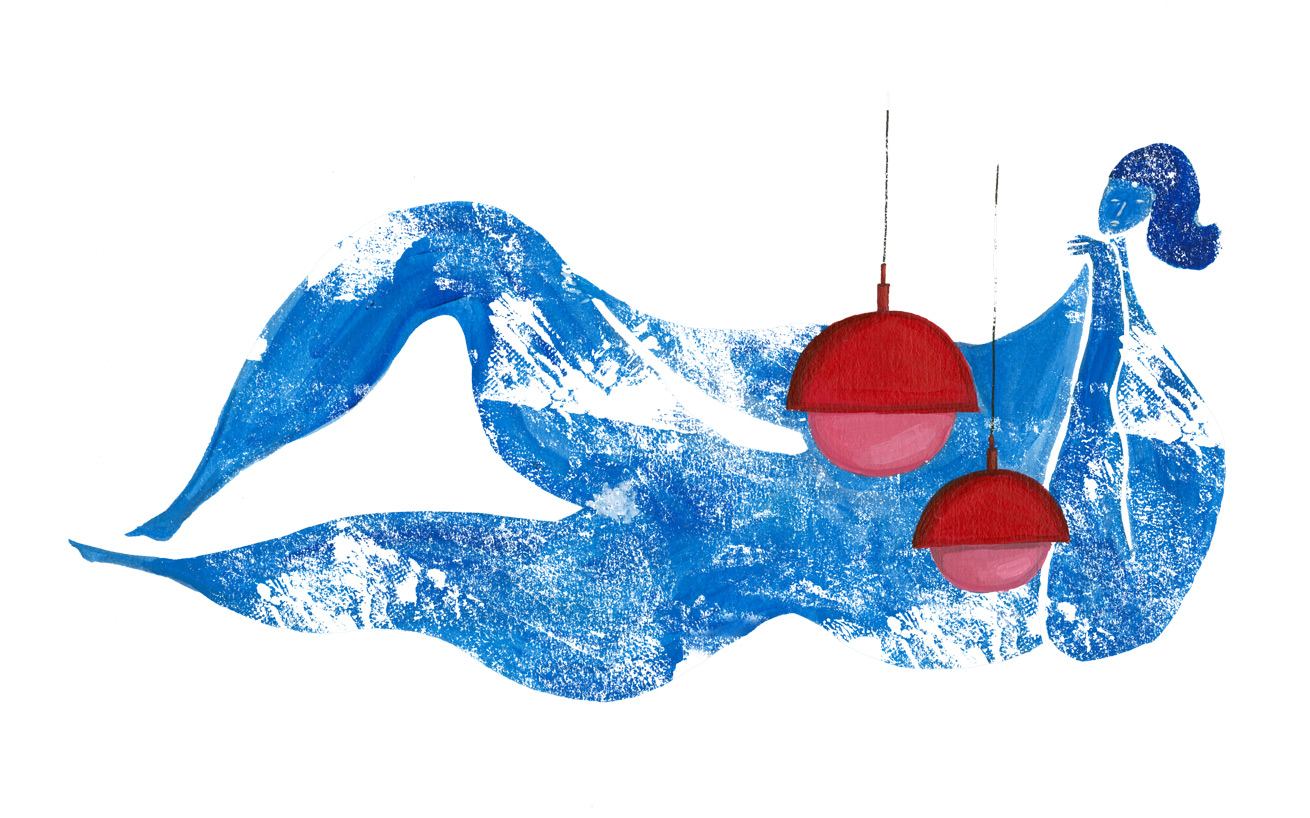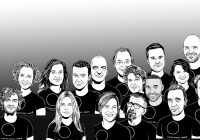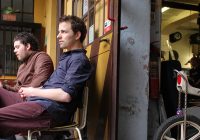To design is to make love’, someone might say who does not necessarily know much about either subject, and you would believe them too. If I say that design is essentially a very erotic affair and that designers are sex-crazed hunters desperately searching for a way of propagating themselves, in which incest, necrophilia and forgotten contraceptives are no exception, I would run up against more opposition. So let me explain why it’s nevertheless true and why design actually does boil down to making love.
Essay by Kees de Haan
Illustrations by Miguel Tanco
Objects seem to be possessed of eternal youth, at least in the dreams of many designers. It’s a world in which everything is fresh and beautiful, without kitsch and tedium. Only dull designers want to achieve this with cheese-slicer products, and they do not make it either. To start with, a genuine designer must be randy and eternal youth a very wet dream in which art and design dance before your eyes in the moonlight like naughty naked girls, a dream from which you awake panting with your fingers burning and itching to grab her, the holy virgin, design. You see, eternal youth is the product of nothing other than a constant desire for novelty, because the girl who is young today is the middle-aged single mother in a couple of years’ time, as jaded as the cheese slicer. And I assume that you prefer to see a fertile young girl in the moonlight than a bored housewife. Only fertility is eternal and design is mature, ripe to give birth.
Designers look ahead and focus their gaze on their offspring. What they leave behind is more important than what they have, just as a memory is sometimes more beautiful than the actual moment. I sometimes experience things more intensely if I look forward to remembering them, the point at which I can look back with a smile, however beautiful or terrible it may have been. The same applies to design: it is the future that gives history meaning. While we are designing we think about the smile of looking back, your own or other people’s, and hope that it will be one of admiration. There are some things I prefer not to look back on, and the same is true of design. There are people who regard design as a cheap whore available to all. That does not produce children. It is a handful of semen that no one wants to know about.

Illustration by Miguel Tanco
Great artists and designers fertilize design with beautiful, strong and healthy children. They are the works that dance in the dreams of artists, that inspire and motivate, that make you randy and with which designers make love. In the propagation of the artist, his partner is simply the history that others write, those orgiastic climaxes from the turbulent sex lives of the great masters. We view their past like a man or women we would like to please, because we think that it is bound to produce a sound offspring. Of course, inspiration comes from other things too, but I see that merely as the décor of the wedding night. Anyone who is inspired by a beautiful landscape lies in it to screw with Monet, someone who says that he is so moved by the night sniffs at the beard of Van Gogh, and even someone who thinks he lives for a stunning woman only wants the Venus of Botticelli after all.
As I’ve said, eternal youth consists only of a shared desire for something new, but that does not mean that eternal youth is out of the question. The marble statues of the Renaissance no longer even faintly resemble the young nymphs for whom we fall by the dozen, but all the same they have certainly grown to become mature beauties, charismatic goddesses who make us feel like shy adolescents again. The work of Andy Warhol may not be the rebel rock star who wears leather jackets and breaks every rule any more, but it is at least as attractive as an intelligent and experienced philosopher.
Design is linked to time, and the fruits that are born, grow up and mature through the way we look at them. For example, if you want to be provocative today, you should take a look at Marcel Duchamp, but there’s no point in coming up with another urinal. History is important as a sort of guideline for whoever wants to achieve a particular effect. Anyone who propagates himself with the work of another can count on a similar reaction if potent enough.

Illustration by Miguel Tanco
A few words about myself. Physically speaking, I’m as fertile as a gherkin. I’ve known it ever since a few months ago a doctor told me so after a thorough examination of my sperm, which was remarkably lumpy recently. So I can’t have children. You understand how design has suddenly become much more important for me. If I want to propagate myself and give any meaning to this existence, I shall have to face up to history by designing. It may explain my use of erotic language in this essay: my Platonic randiness, the exciting urge to multiply myself with my muses, my models in art and design. I once saw an artist in a gallery who made paintings with his own sperm, each work aimed at women that he had never been able to have. By applying the colour to the canvas and mixing his vital juices with it, he confirmed his fertile existence and lived on in his design. He had got the message.
Jean Tinguely understood it too, when his ultimate love Niki de Saint Phalle told him that she didn’t want any more children from him. Tinguely’s offspring are more magnificent, better and livelier than they would ever have been if they had been of flesh and blood. Tinguely and Niki were always in a state of mutual inspiration, a sort of ongoing cross-fertilization from which the most beautiful monuments were born. Niki’s work represents a woman’s world, her ‘Nana’ is the symbol of fertility and the feminine element in people. You see the opposite in the aggressive machines of Tinguely, which radiate a masculine strength. At the world expo in Montreal in 1967, this confrontation resulted in a number of large sculptures that referred to their own relationship as lovers. The eternal struggle between the sexes was here represented as something beautiful and joyful. At an earlier exhibition in Stockholm, Tinguely and Niki made the ‘Hon’, a sort of pagan fertility goddess. This gigantic, voluptuous woman, who occupied the entire space, could be entered via the vagina and was filled with paintings, a cinema and a bar.
Tinguely and Niki represented design literally as a child-bearing woman. They showed that love is the first and only starting point for a good creation. Money was not Tinguely’s motivation, he never wanted to be dependent on subsidies. All the income derived from his work went straight into new projects. As a result, his almost maniacal urge to create remained alive. Tinguely hated museums, which he believed destroyed the essence of the work. Essence, being occupied, procreation itself – he proved it with his Cyclops. This monument in a wood outside Paris was begun in secret and paid for by Tinguely himself. Niki produced the drawing, Tinguely devised the construction, and they worked on it for almost twenty-five years with a group of artist friends. The Cyclops was raised like a child through the constant building work and need for new modifications. Tinguely’s objective was not remembrance after his death – he would have preferred all his work to be destroyed – but art itself, the celebration of fertility. In my view, this is a fundamental idea by which every designer should live, that leaving your work for posterity should never be the final goal, but the act of propagation itself. It’s the randiness I so much want to talk about.
Tinguely and Niki are remembered for their work, but wrote history through how they lived. It should be clear that I’m a sculpture fan, but that I’m much more inspired by their ideas, the vision of Jean Tinguely. It shows that you shouldn’t try design, just as you shouldn’t try to give birth. Only pregnancy exists, giving birth follows as a matter of course. It takes history with it, but even life itself is not far behind. Tinguely may have stayed with his Niki until his death, that did not alter the fact that he had the women for the taking. The eroticism of creativity is infectious and engages in an ongoing interaction with reality. A good example is Picasso, who first proves that impotence certainly need not always be the reason to become a designer. The different stylistic periods in Picasso’s enormous oeuvre are directly connected with his love life, the many women he had. It is sometimes said that every change in his style was the result of a new surge of passion, a new muse. It shows how important desire, the urge to reproduce is, and how closely design is connected with the real world.
History has meaning for me because it is an example of how this life can have a meaning. You may find that an almost intellectual statement, but anyone who calls himself a designer must know what I’m talking about: the beauty of a woman is enhanced if you’ve seen the Botticelli Venus, the excitement of the nude is more intense if you can recall that Olympia of Manet, being in love is more intense for anyone who has ever heard a Tinguely machine creak, or been overwhelmed by a Picasso painting. Pain becomes more bearable if you know Goya’s drawings, calm is more calming if you have been in a building by Tadao Ando, the simplest line in a teacup can be a miracle if you have touched La Chaise by Charles and Ray Eames. If you don’t consider history, you don’t procreate, you are just masturbating. There’s nothing wrong with that, but it will never lead to a lively creation.
From now on you can calmly take on trust anyone who says that to design is to make love. A lover sees history as his muse and designs to quench his desire, to satisfy the thirst for innovation. And however difficult it may be, show respect for the past. Be afraid to touch her from uncertainty and shame, but above all stay in love and gradually get closer, learn to know her and she will show you what beauty really is. The wedding night will not be far away.
January 2011, Eindhoven
This is the winning essay in the Morf Essay Competition 2011. It was previously published in Morf 14, tijdschrift voor vormgeving. Morf is a publication for design students of The New Institute and Premsela, Dutch Platform for Design and Fashion.
This article was published in Connecting the Dots #3 for the London Design Festival 2011.
For entire magazine click here.













